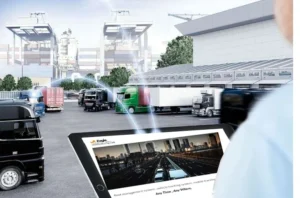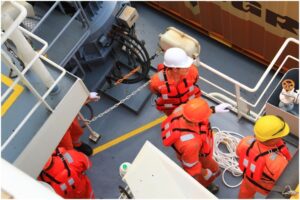
Moving office demands more than merely hauling things from one place to another. According to the viewpoint of Safe Ship Moving Services in office moving – diligent planning, coordination with attention to detail, and foresight are integral to ensure a smooth disruption-free transition. Whether it involves relocating to considerably a larger space, fusing multiple offices in one location, or moving to the city center, here are certain handy considerations one should bear in mind at the doorstep of moving.
- Planning and Preparation
Meticulous planning is the key to a seamless commercial move. Formulating a detailed things-to-do with a timeline is essential to summarize and review the key milestones, such as the timeline for packing, disassembly of equipment, and final date of leaving. To simplify the complex process, make sure to allocate responsibilities among team leads and equally hire a specialized moving coordinator to deal with the logistical matters, minimizing downtime.
- Allocation of Budget
Moving expenses, especially commercial transition can add up quickly without having a proper budget plan. So, it is vital to set a comprehensive budget in the planning phase itself. Factors to consider involve packing materials, moving services, and insurance, alongside potential upgrades or renovation required at the new setting. Having a clear budget in place will be helpful to prioritize expenses and equally sidestep financial surprises in the course of the moving process.
- Communication with Stakeholders
It is vital to maintain transparent communication with employees, suppliers, clients, and other business stakeholders throughout the relocation process. Ensuring that everyone is informed in advance about the moving timeline, new office address, and any potential changes in the operation of business during this phase is crucial. Quickly addressing concerns or queries will help in undergoing a seamless transition without causing any disruptions in relationships as well as workflows.
- Logistics and Transportation
Choosing a reliable moving company like Safe Ship Moving Services is vital for a seamless relocation. Research thoroughly and after interviewing at least three moving company get their quotes for comparison but always go for a dependable commercial mover who has specialization in handling office relocations no matter if their offers seem to be a bit high. Enquire if they are equipped with all needed equipment as well as manpower for moving fragile office equipment, and furniture, efficiently and safely.
- Moving IT Infrastructure
Moving IT infrastructure is considerably a complex job and requires meticulous planning beforehand to dodge costly downtime and potential data loss. Before disconnecting and hauling, it makes sense to call on the IT service provider to understand the need for data recovery and do so if required. These professionals can also help in disconnecting and reconnecting the servers alongside, computers, as well as the telecommunications devices at the new premises, and ensure that the systems are operating smoothly at the new location.
- Compliance With Laws and Regulations
Make sure to obtain the required permits along with licenses in advance to sidestep delays leading to fines or penalties during the transition phase. It makes sense to consult a legal expert to ensure the terms of the lease agreement are in line to avoid further complications that may arise.
- Cleaning and Maintenance
Before leaving the current office space, ensure the entire floor is thoroughly cleaned and damages, if any, are repaired. Schedule inspections of the site along with the property manager or landlord to avoid potential disputes on security deposits. Similarly, do the needful for cleaning the new location to create a healthy and welcoming office ambiance for the employees and clients.
Last but not least, once after moving, conduct a thorough evaluation of the transition process to identify the prospective and limitations of the location. Get feedback from employees, supplies, and stakeholders and try to make adjustments if required.






